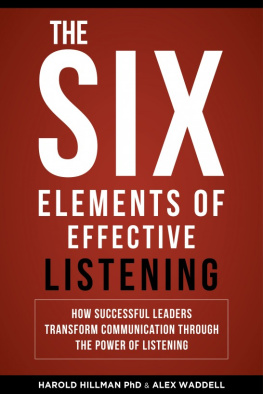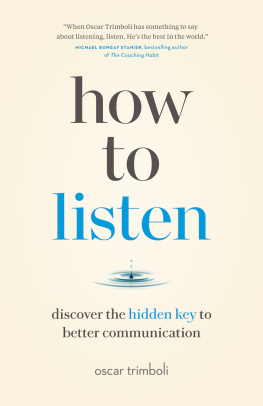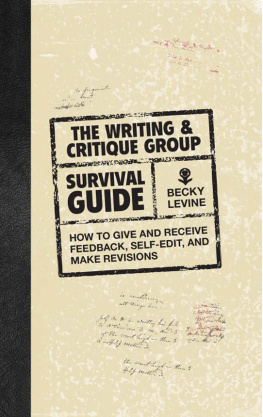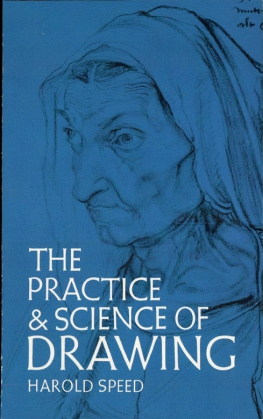Limit of Liability; Disclaimer ofWarranty: While the publisher/author has used her best efforts in preparing TheGraphic Facilitators Guide, she makes no representations or warranties withrespect to the accuracy or completeness of the contents of the book andspecifically disclaim any implied warranties of merchantability or fitness fora particular purpose. No warranty may be created or extended by the author,either implicitly or explicitly. The advice and strategies contained herein maynot be suitable for your situation. You should consult with a professionalwhere appropriate. Neither the publisher nor author shall be liable for anyloss of profit or any other commercial damages, including but not limited tospecial, incidental, consequential, or other damages.

When people ask me, So what do you do? I say, Ive got areally strange job. Im a graphic facilitator.
[Cue sound ofcrickets.]
Once I describe what the heck that means, folks areintrigued. It took me seven years of doing the work before I understood how toclearly answer the question. Another seven years later, Im ready to share thisguide with you. I welcome you into the next wave of graphic facilitatorstackling that question.
This book focuses on the specific role of mapping a meetingwith words and images. The work is a powerful tool for groups to be moreproductive. Even more powerful are the abilities of listening, thinking anddrawing that fuel graphic facilitation. Acuity in these skills holds a muchbroader power. I invite you to develop your powers by focusing on this rolefirst.
In a few pages, well begin answering the question, What isa graphic facilitator? First, let me share some thanks.
My deepest thanks go to my dear colleagues JohnWard and Lynn Carruthers . At my second InternationalForum of Visual Practitioners (IFVP) conference, John approached meand said, I like you so much, I now consider you my sister. I couldnt beprouder to be Johns adopted sibling. Our umpteen conversations about drawingover the past decade have fed my mind and soul. Please check out hiskinesthetic modeling process for just a peek into his magnificent mind.
Lynn Carruthers is a force of nature and my most trustedsounding board. In 2005, Lynn asked, What if you and I did the beginners classat next years IFVP conference? That wonderful what if became a greatthree-year collaboration and co-teaching experience with Lynn. I thank her forpushing me into organizing my thoughts about this work and letting me go nutswith the class workbook. The three iterations of that workbook were the rootsof this guide. Lynns candor and kindness have meant the world to me.
Thank you to Sari Gluckin and PamelaMeyer both of whom are clients, collaborators and friends. Ive hadthe great pleasure of working with both women for a dozen years, and thelongevity of our working relationships has taught me heaps.
Sari is a master of posing the perfect generative questionand infusing her facilitation with design thinking. She has gifted me countlessopportunities to map the meetings of her clients. Our seamless process allowsus to leave sentences unfinished and we can communicate with knowing nods. Thatease belies all the good work and thinking weve shared around facilitatinggroups to wish when they think. I thank Sari for sharing her practice with meso I could strengthen mine.
Pamela Meyer is a wonderful role model in treating everyperson and interaction with thoughtfulness and integrity. She fuses focus withplayfulness, teaching people how to turn workplaces into playspaces. We had afantastic first adventure in self-publishing when we co-created our book in Permissions format. Upon waking, I knew my next project. Sevenmonths later, here is that dream come to life.
A big bear hug to my former partnerScott Forschler. Hes the non-visual philosopher and Im the non-philosophicalartist, but we shared curiosity, our love of learning, and of thinking aboutthinking. Scotts sweetness and stability was a most positive emotional tetherto help keep me grounded before I flew away or flamed out.
Looking to the past, I amgrateful that I stumbled into Grinnell College . I had no idea what college reallymeant, but I had an intuitive pull to that tiny, intense campus in the middleof Iowa. Grinnell was the perfect environment to foster my critical thinkingand independence. Thank you to Jim, Aaron, Ross, Amihan, Dan, Gwen, Shea,Kathleen and many others for their enduring friendships. Much love to mydearest friend Rebecca Kresse, who reminds me that life is too short, but Illalways remember her heart and how she shone.
Thank you to MGTaylor Corporation for the incredible window into how people worktogether, both our teams and our clients. After wandering out of Grinnell,classmate Kathy Clemons helped me stumble into an Ernst and Young office thatused MG Taylors processes. I discovered that my love of drawing and thinkinghad the name of graphic facilitation, and what the heck a knowledge workerwas. My three most important lessons were iteration, documenting your process,and how to form teams for the task at hand.
I know Im so darn full ofthanks, but Id also like to thank my editor Jenni GroverProkopy . We started out as friends of friends who both happened tobe expanding our businesses in the same directions. I thank Jenni for hercompassion, camaraderie and editing to make this book stronger.
I thank you for taking the time to read this book. Ihope it enables you to do great things and facilitate others in doing greatthings.
Last, I want to share a quotethat gives me chills. It is from architect and urban planner Daniel Burnham.When I first read this quote, it connected to my love of Chicago:
Make no little plans.They have no magic to stir men's blood and probably themselves will not berealized. Make big plans; aim high in hope and work, remembering that a noble,logical diagram once recorded will never die, but long after we are gone willbe a living thing, asserting itself with ever-growing insistency. Remember thatour sons and grandsons are going to do things that would stagger us. Let yourwatchword be order and your beacon beauty. Think big.
DanielBurnham
Chicago architect
1846-1912
Years later, I reread the quote and it bowled me over withhow it resonates with my work as a graphic facilitator. One hundred plus yearsafter this was written, lets stir womens blood too, and explicitly add thedaughters and granddaughters.













